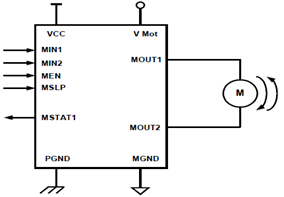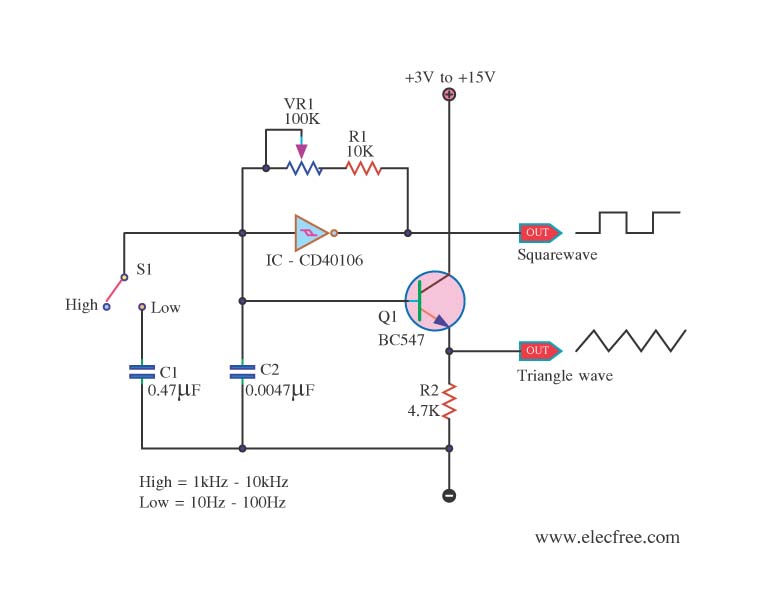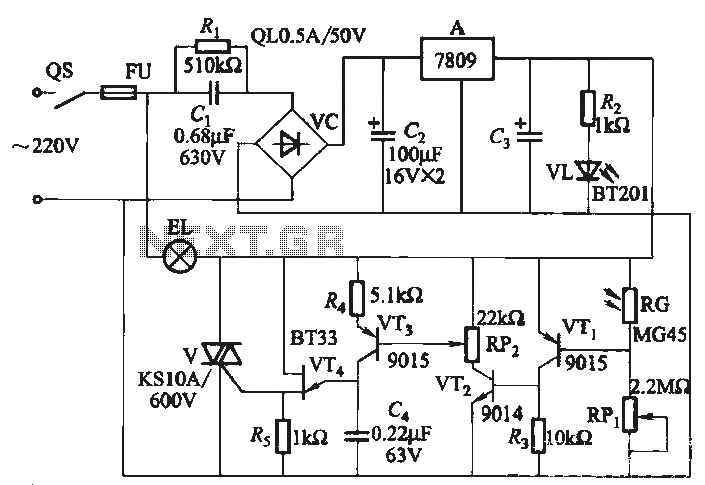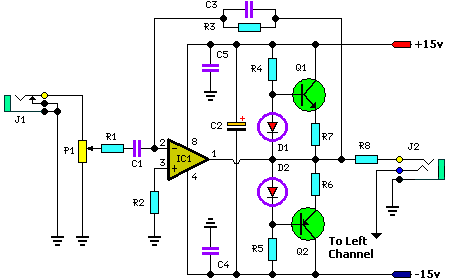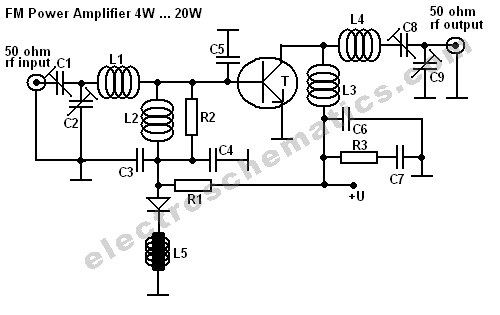
High Frequency Generator Circuit
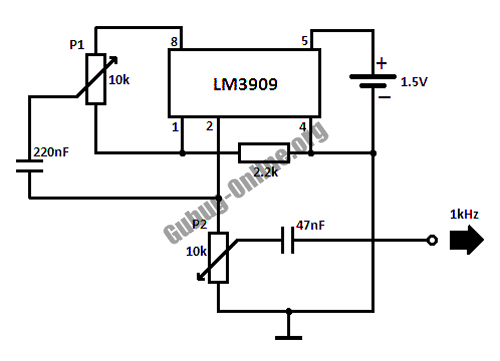
This circuit design for a high-frequency waveform generator is highly beneficial for electronic experiments and designs. The circuit generates sine wave oscillations, but it can also be modified to produce triangle or square wave functions.
The high-frequency waveform generator circuit typically employs operational amplifiers (op-amps) or specialized waveform generator ICs to create various waveforms. The core of the circuit consists of a feedback loop that determines the frequency and amplitude of the output signal.
To generate a sine wave, the circuit may utilize a Wien bridge oscillator configuration, which includes resistors and capacitors to set the frequency while maintaining stability. The output can be adjusted using variable resistors or potentiometers to fine-tune the amplitude and frequency of the sine wave.
For generating triangle and square waves, the circuit can incorporate a Schmitt trigger or a comparator. By feeding the output of the sine wave generator into the comparator, the circuit can produce a square wave by switching the output high and low at the peak and trough of the sine wave. To create a triangle wave, an integrator circuit can be used in conjunction with the square wave output, converting the square wave into a linear ramp signal.
The power supply for this circuit typically requires a dual supply voltage to accommodate the op-amps or waveform generator ICs, ensuring that the output can swing positively and negatively around a reference point. Proper decoupling capacitors should be placed close to the power supply pins of the components to filter any noise and ensure stable operation.
Overall, this high-frequency waveform generator circuit offers versatility and adaptability for various electronic applications, making it an essential tool for engineers and hobbyists alike.This is a design circuit for high frequency waveform generator is very useful in electronic experiment and design. This circuit is generate sine wave oscillation, but actually we can modify the circuit to generate triangle or square wave function.
Th .. 🔗 External reference
The high-frequency waveform generator circuit typically employs operational amplifiers (op-amps) or specialized waveform generator ICs to create various waveforms. The core of the circuit consists of a feedback loop that determines the frequency and amplitude of the output signal.
To generate a sine wave, the circuit may utilize a Wien bridge oscillator configuration, which includes resistors and capacitors to set the frequency while maintaining stability. The output can be adjusted using variable resistors or potentiometers to fine-tune the amplitude and frequency of the sine wave.
For generating triangle and square waves, the circuit can incorporate a Schmitt trigger or a comparator. By feeding the output of the sine wave generator into the comparator, the circuit can produce a square wave by switching the output high and low at the peak and trough of the sine wave. To create a triangle wave, an integrator circuit can be used in conjunction with the square wave output, converting the square wave into a linear ramp signal.
The power supply for this circuit typically requires a dual supply voltage to accommodate the op-amps or waveform generator ICs, ensuring that the output can swing positively and negatively around a reference point. Proper decoupling capacitors should be placed close to the power supply pins of the components to filter any noise and ensure stable operation.
Overall, this high-frequency waveform generator circuit offers versatility and adaptability for various electronic applications, making it an essential tool for engineers and hobbyists alike.This is a design circuit for high frequency waveform generator is very useful in electronic experiment and design. This circuit is generate sine wave oscillation, but actually we can modify the circuit to generate triangle or square wave function.
Th .. 🔗 External reference
Warning: include(partials/cookie-banner.php): Failed to open stream: Permission denied in /var/www/html/nextgr/view-circuit.php on line 713
Warning: include(): Failed opening 'partials/cookie-banner.php' for inclusion (include_path='.:/usr/share/php') in /var/www/html/nextgr/view-circuit.php on line 713
